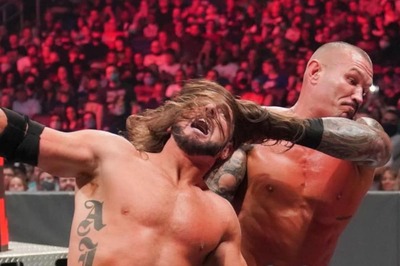
views
Suzuki insider Shinzo Nakanishi gets Indian and Japanese leaders to share power at Maruti. It is a tough blend to concoct
About 25 years ago, India was a different country, Maruti Suzuki India (MSIL) was then called Maruti Udyog and Shinzo Nakanishi was a younger man. “It was easy to do business here but difficult to live,” MSIL’s first Japanese managing director recalls. Indians raved about Maruti cars and bought whatever it sold, but life was tough for a Japanese man. India then had few lifestyle comforts to offer. “It was difficult to even call home. When I got through I had to shout as the line was bad.” He also missed Japanese food.
Today, “Business is tough. Life is easier,” says Nakanishi, 61. Competition is stiff and selling cars is no longer easy. Infrastructure has improved. Sprawling malls make shopping easier. The telecom network is world class. And yes, he gets “better, cheaper wasabi here than in Japan — served in [a] five-star environment.”
Nakanishi is learning to settle down with the new realities. So is Suzuki Motors, the parent of India’s largest car maker, MSIL. What began as a random business play in a Third-World country in the 1980s has now unexpectedly become the star, contributing 13 per cent of the revenue and over 40 per cent of the net profit. India happens to be the only market in the world where Suzuki has over 50 per cent market share. “After the [Goldman Sachs] BRIC report [which highlighted the importance of emerging markets like India], people in Japan say Suzuki had the eyes to see, [it had] future vision,” says Nakanishi.
“Nobody thought like that. We just got lucky,” he candidly admits.
Suzuki is now leaving nothing to chance. In the last one-and-half years, it has rejigged the top deck at Maruti, appointing Suzuki stalwart Nakanishi as the MD. It is pumping in more than Rs. 9,000 crore in three years to target one million car sales, and export 200,000 while substantially scaling up the R&D in India. “Suzuki is preparing Maruti for a bigger, much bigger, global role,” says chairman R.C. Bhargava.
Hindi, Japani Bhai-Bhai
This marks a transition from an insecure, anxious parenthood with worries over maintaining control on its faraway subsidiary to a far more confident relationship. Even till 2007, two Japanese joint MDs and a Japanese chairman flanked the Indian MD, Jagdish Khattar, to keep a tight control over Maruti. Then Suzuki finally decided to let go. It anointed a Japanese MD, abolished the post of joint MDs and appointed an Indian chairman. All this was beefed up by a move to broaden the Indian leadership team by forming a slightly complex hybrid management structure: A new mini board was formed of nine top executives — with an Indian-Japanese pair steering each of the four key departments (the fifth, administration, is managed only by an Indian).
PAGE_BREAK
This Indo-Japanese hybrid leadership was a risky strategy that almost immediately came under an acid test. In a rocky year (2008-09), when the industry grew at the slowest pace in seven years, market leader Maruti’s sales grew by an above-average 3.6 per cent and exports grew by a third. “The hybrid setup gave us the flexibility and the nimbleness to respond faster,” says SY Siddiqui, a management executive officer (MEO) at MSIL. For evidence he reels out instances.
When its biggest financier ICICI Bank overnight axed its monthly loan disbursal from around 11,000 cars to 1,500, Maruti quickly went out to sew up deals with public sector banks. “In the past, the bureaucracy and communication gap would have delayed our response,” he says. But now, with weekly MEO meetings, Japanese and Indians are on the same page and decisions are faster.
This marks an important step in scripting Maruti’s future. Inside Maruti, stories abound about how Khattar had to struggle to communicate to head office. Once, Suzuki famously sat on the decision to bring diesel engines to India when Tata Motors rapidly grew in that segment. Frustrated, Khattar eventually imported Peugeot engines to retrofit in Maruti cars. But now, having Nakanishi, a Suzuki stalwart and board member, means taking decisions, often not in sync with HQ norms, is easier. “I know how to make them understand what we need in India,” says Nakanishi who is in Japan every month. This is especially needed when the head office “gives guidance which is not appropriate. I can tell them [bluntly],” he says. So every time a decision is stuck, Nakanishi knows how to expedite things.
The close ties with the headquarters signal a bigger play for Maruti in the Suzuki stable. India is being readied to be its global small car hub. By 2011, export from India is pegged at 200,000 with almost 90 per cent of the small car R&D work being moved here. “From doing small touch-up jobs, now we are aspiring to develop a full car from scratch in India,” says I V Rao, the research and development head.
Cross pollination between Maruti and Suzuki too is rising steadily. The Indian arm is helping Suzuki Indonesia improve on quality and IT systems even as the Pakistan arm seeks tips on people management. “With Maruti’s strength in India, now we have to see how we can enhance our global role and contribution,” says Nakanishi.
PAGE_BREAK
Dealers too can feel the difference. Earlier, that job was driven mostly by the MD, Khattar, who would frequently interact with dealers and customers. Now, that has been left to the marketing head Mayank Pareekh. “I want to leave the day-to-day operations mostly to the Indian managers,” says Nakanishi.
Not an Easy Marriage
In theory, Nakanishi’s new hybrid structure is a wonderful way to address organisational issues at Maruti. For long, Maruti executives complained about hitting the glass ceiling as Japanese held most top jobs. Empowering Indians through the hybrid model should help. Instead of working in silos like in the past, the Indian-Japanese pair-ups aim to bring local understanding and Suzuki way of doing business together in a non-hierarchical manner. It is a good idea only if they work as equals and in sync as a team.
“There is no conflict,” insists Nakanishi.
But there isn’t enough chemistry either!
The cultural differences are stark. The Japanese are reserved. Most live out of hotels in Delhi and almost never bring their family (irrespective of their tenure). “There is no social interaction outside office with them,” says a senior Maruti executive. Their work style is methodical and process driven. “They [the Japanese] hate opinion without data and want numbers in everything,” recalls a senior former Hero Honda executive, who worked with Honda closely. Siddiqui does not disagree. “Nothing should be left to chance or individual interpretation,” he says. And if the process is finalised and there’s a sudden shift in business dynamics? “Then define deviation and the response mechanism,” he adds.
By contrast, Indians are intuitive. They prefer to lean on gut feel and fine-tune their responses as they go along. They play a lot with relationships and leverage it everywhere, even in business. “We can jump queues, get our work done by pulling the right strings,” says the Hero Honda executive.
Khattar and Nakanishi exemplify this dichotomy well. The former was known for his excellent personal rapport with dealers, executives and even banks and leveraged it to steer Maruti’s business during good times and bad. A dealer recalls how sometime during 2000-01, business dipped, margins got squeezed and many Maruti dealers were giving up dealerships.
Khattar met them and assured them, “give me time — I will pass on every future price hike to you,” besides of course putting together a strategy for a long-term solution. It worked. Khattar created family occasions to celebrate within the company and visited employees during family functions. So while formal Japanese culture did hang heavy at
Maruti, Khattar with his hands-on approach and a very accessible management style, managed to build an emotional connect with his staff. His monthly informal sessions with young executives were a hit. Even dealers miss direct access to the MD’s office.
PAGE_BREAK
Nobody is betting on Nakanishi continuing the tradition. Like any Japanese, he is relatively hands-off and inaccessible, his family with two grown up children is in Japan and he still lives out of Ashoka Hotel in Delhi.
As MD, he prefers to focus on macro issues leaving the operational issues to his second line. Many employees and dealers can still feel the vacuum that Khattar-Nakanishi transition created. And clearly, how well and quickly Nakanishi’s second line rise up to the task will hold the key.
Such cultural differences between two countries are expected and normal. What makes it significant at Maruti is the legacy hangover. “Irrespective of the hierarchy, it is not wrong to say apple-to-apple, Japanese opinion carries more weight,” says a very senior executive who left Maruti two years ago. On paper, Indians and Japanese are at par within Maruti today — a move driven by business compulsions. But in their minds, attitudes and psyche that transition isn’t yet complete.
It comes through even in small conversations. Most Japanese executives working alongside Indians don’t speak English. So how do they communicate? They use interpreters. “And we have picked up working Japanese,” says one of the MEOs. The hierarchical relationship shows through.
The Game’s Afoot
Maruti’s transformation coincides with the mounting challenges in the market. Suddenly all global majors are eyeing its backyard, India’s small car market. While it may still have the volumes and the business, its leadership position in the minds and perception is getting wrested away. It is no longer the top price warrior in India. Tata Nano is and more such little beauties are coming.
Consider this: Suzuki is a niche player in most car markets in the world. “It thinks like a small fringe player back in Japan,” says a senior Maruti executive who has been with the company for almost a decade now. In India, it is the leader. “That dichotomy in mindset is so visible within Suzuki when you go to Japan,” he says. This fringe player mindset showed up once in the past. When Maruti’s market share dipped from 50 per cent plus to a low 40 per cent in 2001, Japanese executives had said “50 per cent? Unsustainable, 30 per cent is more real,” a Maruti executive recalls. But Maruti refused to accept it and did manage to regain its market share to 50 per cent plus.
Will knitting Maruti closer into the Suzuki stable take it a little further away from Indian realities? Perhaps not. But for that to happen, Suzuki’s hybrid model has to work in theory and in practice. It may be difficult and Nakanishi is aware. “In the future there is a possibility that an Indian could get elevated to the board. Even at the headquarters. After me, there is a chance of an Indian becoming an MD,” he says, almost hesitantly.
















Comments
0 comment